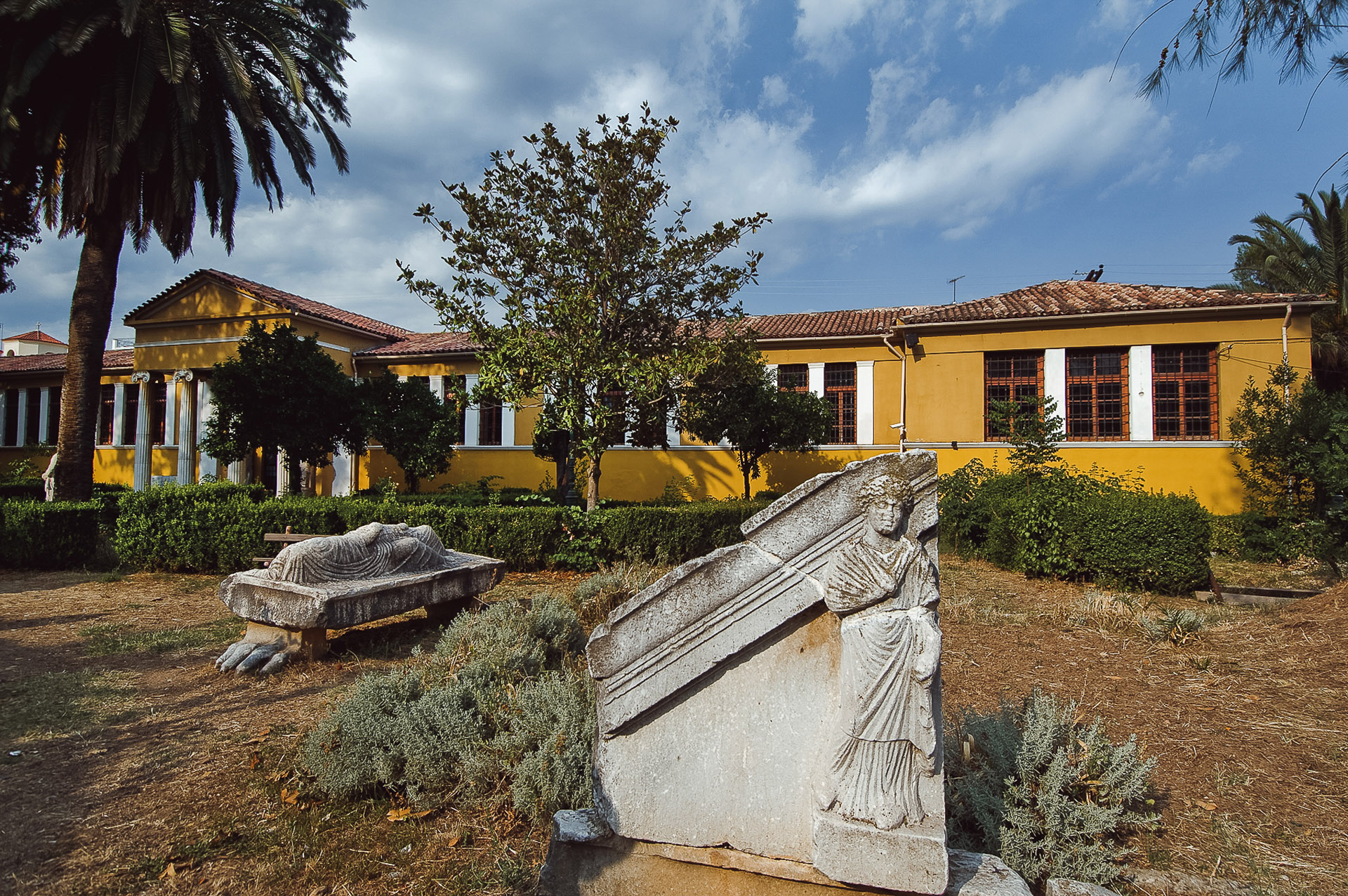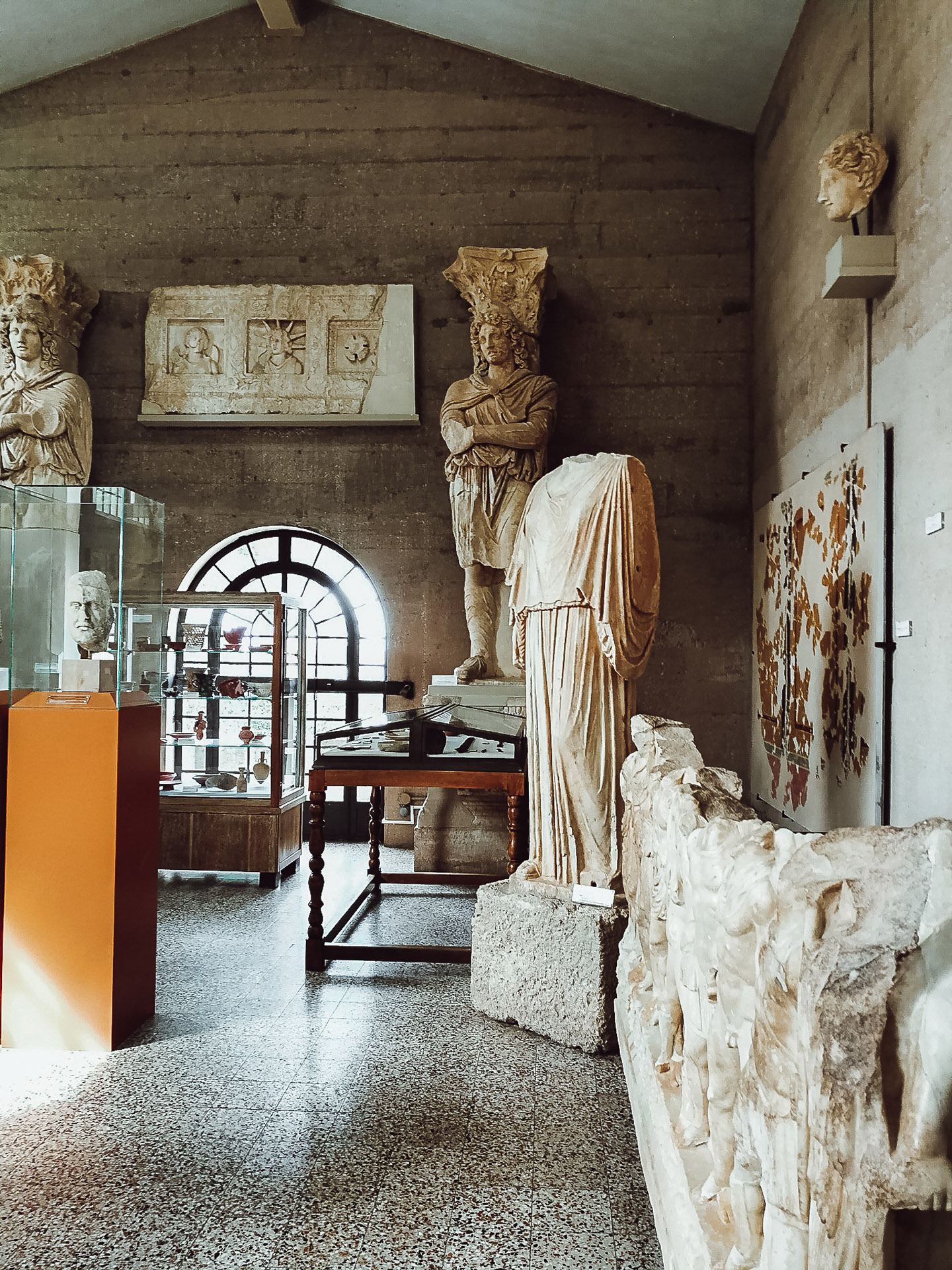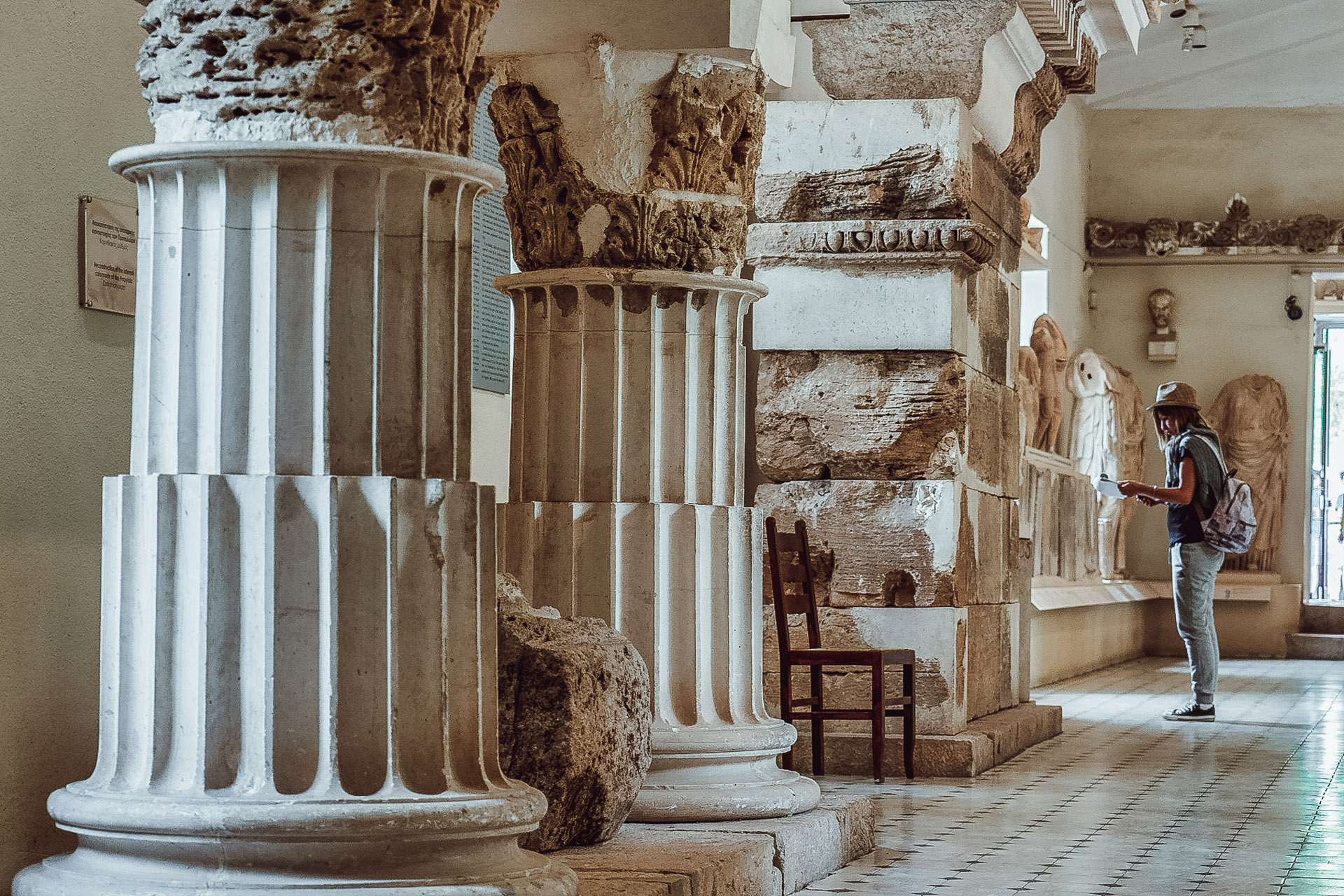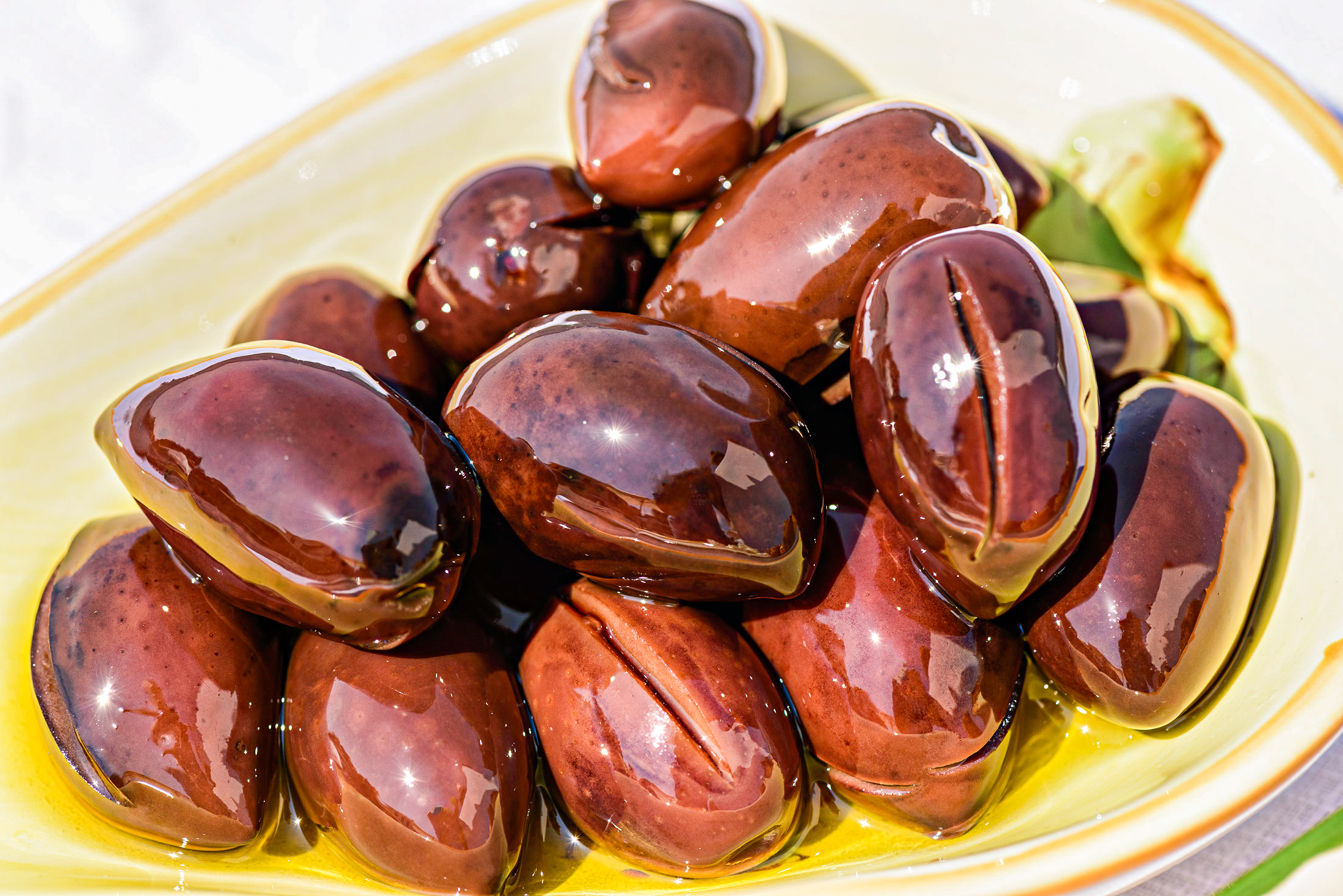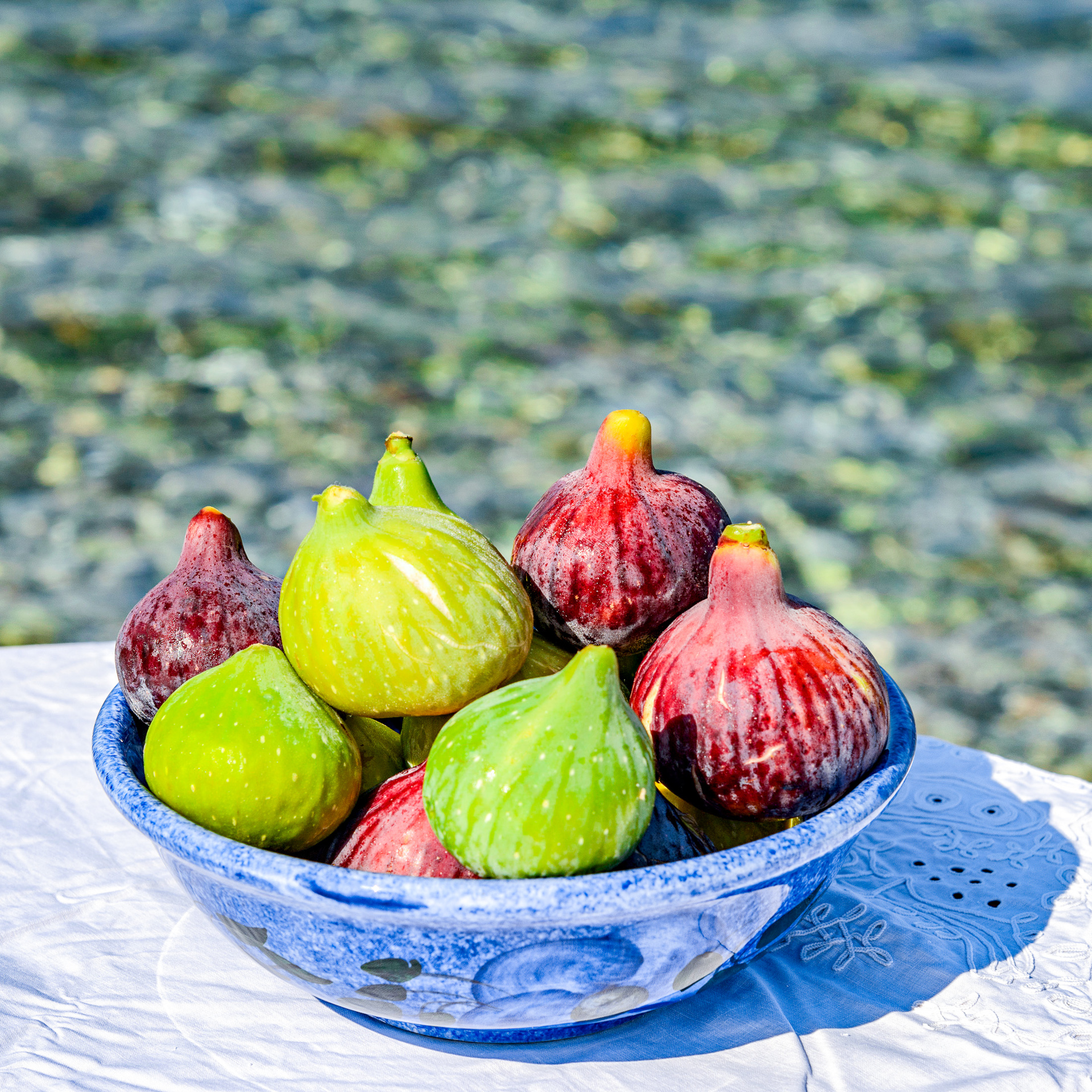TOP 10 archaeological museums in the Peloponnese
Olympia, Mycenae, Epidaurus, Diros Cave, Ancient Corinth, Messene and Sparta – just thinking about all the stunning archaeological treasures that have been uncovered in the Peloponnese is enough to make your head spin. Fortunately, it’s easy to see these amazing finds and to learn about their history as many of them are beautifully displayed in world-famous museums in the Peloponnese. You can get a real sense of continuity as well, as many of the museums are either in the archaeological site where the remains were found or close by. And while everyone obviously thinks of Ancient Greece when it comes to archaeology, these museums also have artifacts from as far back as the Neolithic era. The museums also change and expand, with new exhibitions and presentation showing more and more of the finds discovered during excavations. So, grab your Indiana Jones hat and head off to explore the 10 best archaeological museums in the Peloponnese.
Archaeological Museum of Olympia
As you enjoy the stroll up to the museum, take some time to drink in the beautiful nature surrounding it and to appreciate the museum’s impressive facade. This is one of the most important museums in Greece and is home to some truly awe-inspiring sculptures such as the Hermes of Praxitele, the Nike of Paionios and the sculptural decorations from the Temple of Zeus.
The museum collection also includes around 14,000 bronze objects- the richest collection in the world! You will be able to see a wealth of weapons, figurines and other objects, including the magnificent helmet which was made to honour the Athenian general Miltiades after his victory in the battle of Marathon in 490 BC.
The Museum in Olympia is connected to the famous archaeological site. It tells the story of how the Temple of Zeus at Olympia, one of the outstanding temples in the ancient world, developed over the centuries and became the home of the Olympic Games. There is a permanent exhibition of items, dating from prehistoric times to the early Christian years, which were found during the excavations which were carried out in the Altis, the sacred precinct in Ancient Olympia.
Museum of Ancient Corinth
The archaeological site of Ancient Corinth, the important city-state that flourished in the 8th century, is to be found in the beautiful countryside at the foot of Acrocorinth. In 1932, the American School of Classical Studies built the archaeological museum close to the ancient temple of Apollo. The museum is built around two courtyards where you can see sculptures, reliefs and inscriptions in an authentic setting. Inside the museum itself are the prehistoric collections, the finds from the Asklepion and other objects dating from geometric times to the Byzantine era. And don’t miss the Twin Kouros from ancient Tenea; as well as being works of art, these statues also have an adventurous history as they were discovered by antique smugglers and then recovered by the Greek police.
Archaeological Museum of Mycenae
Just visiting the "Golden Mycenae" archaeological site is a treat in itself, but learning a little bit about the lives of those who lived there makes it an even more interesting experience. The archaeological museum on the northern slopes of the citadel rock has at least 2,500 finds which were uncovered during excavations carried out in Mycenae and the surrounding area since the late 19th century. This museum focuses on the everyday life of the Mycenaeans, with exhibits including ceramics and items made from gold, metal and stone. Most of the finds from the glorious era of the first rulers are in the National Archaeological Museum of Athens. The exhibition is housed in four rooms on two different levels. The upper level, where your visit will begin and end, also has an excellent view of the archaeological site.
Archaeological Museum of Nafplion
Nafplion, with the Palamidi, Akronafplia and Bourtzi, is one of the most beautiful cities in Greece. There’s so much to do and see when you visit, but make sure you don’t miss out on the archaeological museum in the city centre. For starters, the building itself has a story to tell as it was built in 1713 by the city’s Venetian rulers. The exhibitions are displayed to give a vivid narrative about how cultures in Argolis evolved from remote prehistory to late antiquity.
Perhaps the most stunning exhibit is the Dendra panoply, the famous bronze suit of armour which was crafted with skill and precision more than 3,500 years ago at the end of the 15th century BC. Also, look out for the large wheeled figurines dating from the 13th and 12th centuries BC which were discovered in Ancient Midea and Ancient Tiryns, the 12th century BC clay figure head known as "the Lord of Asine" and the Linear B tablets.
Diros Neolithic Museum
Is there anything more moving than getting to know more about your very distant ancestors and seeing how they lived and what they created? The museum of Diros is the perfect place to "meet" the people from the Neolithic era (6200-3000 BC) who lived in the famous cave at Alepotrypa, with its enchanting stalactites and stalagmites.
The exhibits include Neolithic figurines, human skeletons and skulls, pottery from mass burials and utensils. You can also see stone and bone tools, tools used for weaving, weapons made of obsidian, stone, bone and copper, jewellery, and decorated clay vessels which were found in the cave. Finally, the female skeleton which dates from around 3200 BC is an interesting link to human life all those years ago.
Sparta Archaeological Museum
Everyone has heard of the famous Spartans and Leonidas with his 300 warriors! Well, now it’s time to find out more about the Spartans and how they lived with a visit to the excellent archaeological museum in Sparta. And if you want to see what the great warrior king looked like, there is a famous statue (from the second half of the 5th century BC) of a Spartan hoplite which is thought to depict Leonidas himself!
The museum has seven exhibition halls where you can see finds from the Mycenaean Age (1600 BC-1100 BC), the Geometric Period (900 BC-700 BC), the Archaic period (700 BC-480 BC) and the Roman period (30 BC-324 AD). These are artefacts which were discovered in archaeological sites in the area around Sparta, as well as some from Laconia. There is a wide variety of items including inscribed columns from the Sanctuary of Artemis Orthia, votive reliefs dating from the archaic period to Roman times, and clay masks from the Sanctuary of Artemis Orthia which are important examples of sculpture from Laconia and date from the 7th and 6th centuries BC.
Epidaurus Archaeological Museum
The Sanctuary of Asclepius at Epidaurus is a UNESCO World Heritage Site, so it’s not surprising that it has an excellent museum right beside it. A visit to the museum will give you a much better understanding of the Sanctuary, and of the worship of Asclepius, the god of mental and physical healing.
The artifacts in the museum range from the Archaic period to Roman times and include architectural elements of major buildings in the sanctuary. Some of the most interesting are the altars, medical tools, votive sculptures and inscribed columns, and the inscriptions from the sanctuary of Asclepius. There is also an inscription with a hymn to Apollo and Asclepius written by the poet Isyllos (around 280 BC). The second room has plaster copies of works which are currently in the National Archaeological Museum in Athens, such as statues of Asclepius, the goddess Hygieia and Aphrodite Enoplios (armed).
Archaeological Museum of Messenia in Kalamata
This is a fascinating museum with a novel and interesting layout. When you visit the museum, you follow a central "artery" which leads you through the showcases and exhibits. This trail represents the Pamisos River which runs through a large part of Messenia and into the Messinian Gulf. There are also secondary "routes" leading to other sections, each one exploring one of the four provinces in Messenia. Each province has its own characteristics and history, so this is an effective way of displaying some of the antiquities found in the region and exploring the area’s history from prehistoric times to the Byzantine period. For example, the famous kingdom of the Homeric hero Nestor was in Trifylia, many vaulted tombs were discovered in Pylia, Messene was home to a flourishing culture, especially during Hellenistic and Roman times, while Kalamata was a centre of historic developments both in antiquity and during the Venetian and Frankish conquests.
Ancient Tegea Museum
This museum won the "European Museum of the Year" award in 2016 and is a great way to complement your visit to the famous Temple of Athena Alea. The museum was updated in 2014 and has beautifully designed displays which are successfully combined with various digital apps. The exquisite and evocative lighting also highlights the exhibits, and you will find yourself immersed in the story of Tegea, the most powerful city in ancient Arcadia. There are artifacts dating from prehistoric to archaic times, and you can learn all about how the Temple of Athena Alea changed and evolved from Geometric to Hellenistic times.
Museum of Ancient Messene
The impressive 400-acre Messene archaeological park includes one of the most well-preserved and important cities of antiquity. Over many years, excavations have brought a number of very significant archaeological treasures to light, and some of these are exhibited in the museum in Mavromati village. There are some beautiful sculptures which will give you a better understanding of the historical role played by Messene when it was the political and artistic centre of the ancient Greek world. For instance, there is a 2.32 m high marble statue of Hermes, a 1.71 m high headless statue of a robed man and Polykleitos’ statue of a spear-bearer. Don’t miss the statue of Artemis Laphria (the hunter), or the sculptures by the renowned ancient Greek sculpture Damophon that were discovered in the Asklepion and other buildings.

